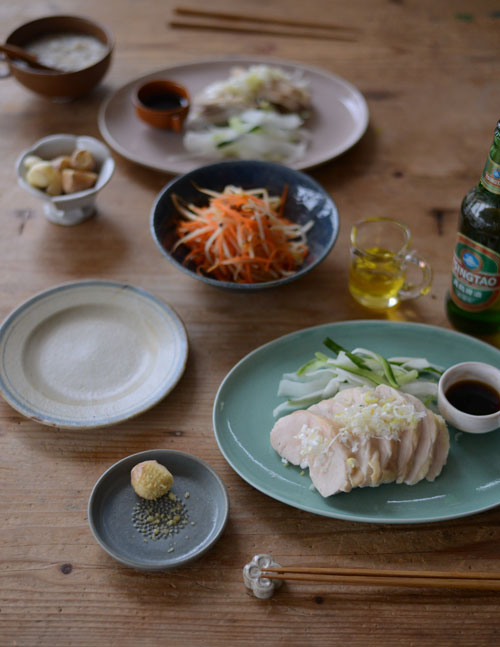当日発送について
以下の条件に該当するご注文を当日配送いたします。
・平日(営業日)の12時までにご注文が完了。
・ご注文いただいた商品の在庫がすべてある場合。
・お支払方法がクレジットカード決済か代引きの場合。
※受注状況や確認事項の有無などにより、お時間をいただく場合がございます。
※12時以降のご注文は最短で発送いたします。
定休日のご案内
土日祝日、お盆、年末年始などは出荷業務をお休みいたします。
Now Loading...
以下の条件に該当するご注文を当日配送いたします。
・平日(営業日)の12時までにご注文が完了。
・ご注文いただいた商品の在庫がすべてある場合。
・お支払方法がクレジットカード決済か代引きの場合。
※受注状況や確認事項の有無などにより、お時間をいただく場合がございます。
※12時以降のご注文は最短で発送いたします。
土日祝日、お盆、年末年始などは出荷業務をお休みいたします。
本日からついに2018春夏の新作の販売がスタートしました!
まだご覧になっていない方はぜひwebstoreの新作ページをチェックしてみてくださいね!
企画スタッフが語る新作のこだわりや魅力がつまったブログとともに紹介しています。
さらに、マルミツのインスタグラム「今日のうつわ」でも
スタッフが新作を使った食卓の様子を毎日投稿していますのでサイズ感や組み合わせなど参考にして頂けると嬉しいです。
さて今回は2018春夏のデプリアントにも登場していたリヴァージュをご紹介します。
まだまだ寒い日が続きますが、二十四節気ではもう立春ですね。
器を少し変えるだけでも季節感が出るので、
テーブルの上から少しずつ春らしくしていき、春を迎える準備をするのはいかがでしょうか。
リヴァージュは土の優しい雰囲気が魅力的なプレートなので、
爽やかさと温かさを併せ持っていて今の時期から取り入れやすいんです。
きれいなパステルカラーが目をひく新作のパレットとの組み合わせ。
落ち着いた佇まいのリヴァージュはパステルカラーやポップな色と組み合わせても上手くまとまります。
リヴァージュは2サイズあり、ここでは170プレートが取皿として使われています。
取皿としてはもちろん、パン皿として使ったり、マフィンやクッキーを並べておやつの時間にもおすすめのサイズです。
鮮やかなグリンピースの緑とブルーのラインがお気に入りの一皿。
トマトやトウモロコシなどぱっと明るい色彩の食材と組み合わせると綺麗なのでサラダもおすすめです。
220プレートはメインにぴったりですが、朝食ではトーストをのせても良いし、フルーツたっぷりのパンケーキもよく合います。
◯ライン、素材感
リヴァージュのポイントは何と言っても爽やかなブルーのライン。
太いラインと細いラインが組み合わされているのでリズムがでて、波紋のようにも見えます。
ラインは濃淡が出て、プレートによって若干色味が異なります。
マット釉がたっぷりかかったところだけやさしく淡いブルーになるのも素敵なんです!
単調な表情ではなく、釉薬のムラがあったり、縁には焦げ感があったり…。
写真のように釉が厚くかかっている部分はぽってりと白くなり、薄くかかっているところは少し茶色くなります。
人の手では操作できない、やきものの面白さが出ています。
◯リムのこだわり
形状はシンプルなリムのあるプレートですが、実はちょっとした工夫があって…
縁の裏が玉縁になっています。
プレートを持ち上げた時、どうしてこんなにも持ちやすいのだろうと思っていたのですが、答えはここにありました。
表はまっすぐ平らなリムですが、裏に丸みがある事で指が引っかかりやすく、安定して持てるんです。
また、縁の厚みがあることでリヴァージュの優しい雰囲気が増しています。
どこか懐かしい雰囲気のリヴァージュを食卓に取り入れて、春を待つ時間も楽しんで頂けたらな、と思います。
気になった方はこちら▶